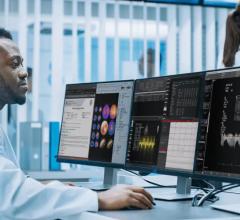
McKesson's Horizon Cardiology now features total Web accessibility.
Technological trendsetters within the cardiology arena have been embarking on a path of seamless integration of their information technology platforms for more than a decade. For many, that pathway may have seemed like an endless uphill battle considering the enormous amount of information that is generated within the complex field of cardiology.
Although the push for seamless integration continues within this complex area of technology usage, the reality of today's marketplace is that the vendor community has continuously improved virtually every conceivable application for cardiology image and information management systems.
Today's systems are extremely versatile, clinically strong and faster and better performing than ever. The newest systems are capable of creating efficient workflows throughout the cardiac enterprise, whether the clinician is trying to manage images and data from echo, the surgery suite, the cath lab, nuclear medicine or any other support or clinical function site.
Although many cardiologists and caregivers readily see the value of integrating the clinical side of the enterprise, the truth is that many of the latest functions support applications that will make the chief financial officer and the logistical administrators happy as well. For instance, today's systems are capable of integrating cost variables, policing up missed revenue sources, decreasing denial claims, improving audit functions and allowing for precise alignment of cost-to-charge elements of every procedure and secondary procedure imaginable.
Many of the applications available today also help to improve third-party payor compliance, drastically improve productivity metrics, improve reporting timeframes and assist in improving provider performance through pinpoint accurate procedural data. A majority of the systems available within the marketplace can provide Web-based applications as well as traditional integration.
Vendor applications within the systems’ lineup are robust and reliable. Even sub-applications such as speech recognition software and related tool chests have become very practical and useable. Manufacturers and vendors have become very adept at improving workflow applications across the continuum of cardiology care within the CIIMS/CVIS technology landscape.
Cardiology image and information systems can also be easily connected to the electronic medical record (EMR) that is being pursued by many institutions nationally. Multifacility usage and cross-regional affiliation networks are popping up all across the cardiology field and are being fueled in growth by many of the CVIS and CIIMS applications being used in hospitals and healthcare facilities.
A number of the current vendor applications utilize push-and-pull integration technologies that assist clinicians in gaining quicker access to existing reports and cases that reside currently in the system and/or in the deeper archives. CIIMS interfaces allow for access to radiology information systems (RIS) as well as seamless PACS compatibility.
Enhanced security features are commonplace within the cardiology image and information systems vendor marketplace as well. Privacy applications allow for a wide variety of secure and trustworthy view and work options by clinicians while simultaneously protecting the flow of information from being sent to unauthorized users.
Reliability, Productivity
Likewise, most of today's systems provide extremely well-engineered applications for disaster recovery and data protection in compliance with HIPAA mandates and similar clinical/administrative requirements. Additionally, registry compliance and interaction is becoming nearly seamless within the the lineup of available systems. Redundant information keeping is becoming a problem of the past as more and more users are discovering these added benefits of CIIMS and CVIS applications within the healthcare vendor marketplace.
Many of the current purchasers of these information system technologies are pursuing them based on their excellent proven potential for improving workplace productivity. Without a doubt, today’s system applications contain a full arsenal of extremely practical features and functions that improve productivity within the typical cardiology arena. Besides the standard functions related to seamless integration of separate cardiology functions and clinical enterprises, today's systems provide for top-notch review speeds of images and data from both the near and deep storage archives.
Perhaps one of the greatest recent developments that affect today's marketplace is the reliability of the infrastructures that connect these CIIMS/CVIS platforms across differing vendor platforms and modalities. Seamless application used to apply to clinical uses within the same vendor family of equipment. That is no longer true within the current marketplace. More and more of these systems are seamless and/or near seamless across every vendor function and equipment modality used within the clinician’s world.
The new marketplace represents a great testimony to the work that has gone on within the vendor and clinician landscape to improve upon one of the most challenging clinical arenas. The vendor applications within the next decade definitely have a tough act to follow.





 May 15, 2024
May 15, 2024 








